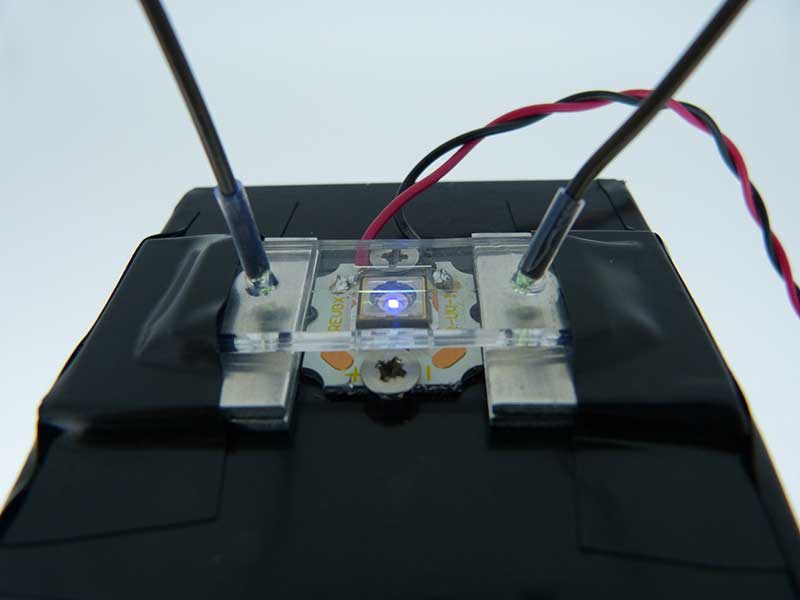Abstract
A lot of fissures called hydrothermal vents exist in deep seabed. It is said that various underwater natural resources and organisms potentially lie beneath the hydrothermal vents. Recently small chemical sensors available for continuous monitoring were developed and mounted on underwater vehicles in order to explore those. Our group has been developing and deploying "Integrated In Situ Analyzer for ATP (IISA-ATP)" to measure the activity level of underwater microbial ATP (adenosine-5’-triphosphate) with a microfluidic device. The purpose of this study is to develop an easy and reliable calibration method for quantification of ATP concentration and install it into the IISA-ATP.
 Microfluidic device for photolysis of caged ATP
Microfluidic device for photolysis of caged ATP
We proposed a new in situ calibration method based on caged ATP. In this method, we first photolyze the caged ATP by UV and then use the uncaged ATP as a standard, which results in no need to prepare multiple ATP standard solutions for calibration. And also, this method is really robust over the existence of reaction inhibitor which exists in sea water sample. We have already developed a microfluidic device which exposes caged ATP to UV. Using this device, we could photolyze the caged ATP with high reproducibility. It was also confirmed that the amount of uncaged ATP was proportional to UV dosage in this device. The developed calibration method would be integrated into the IISA-ATP and be operated in deep-sea near future.
Collaboration
- JAMSTEC
Sponsor
- JST
- MEXT